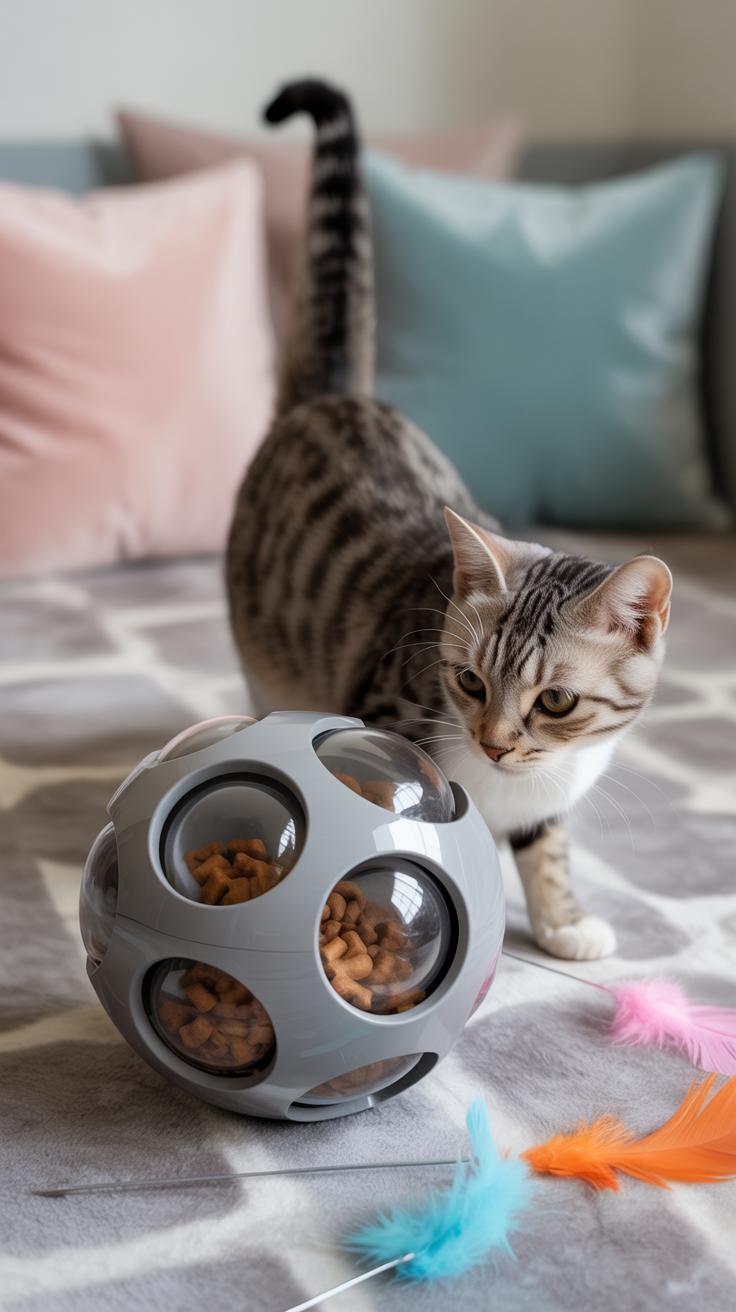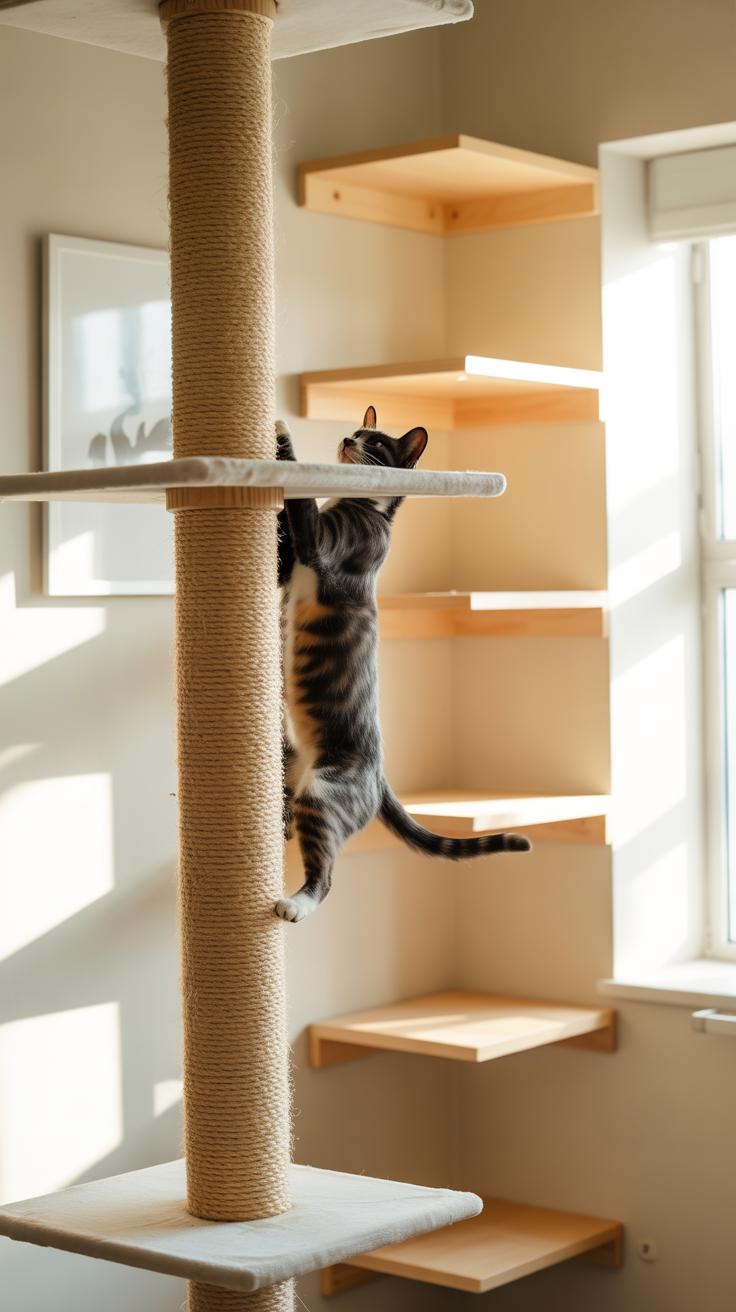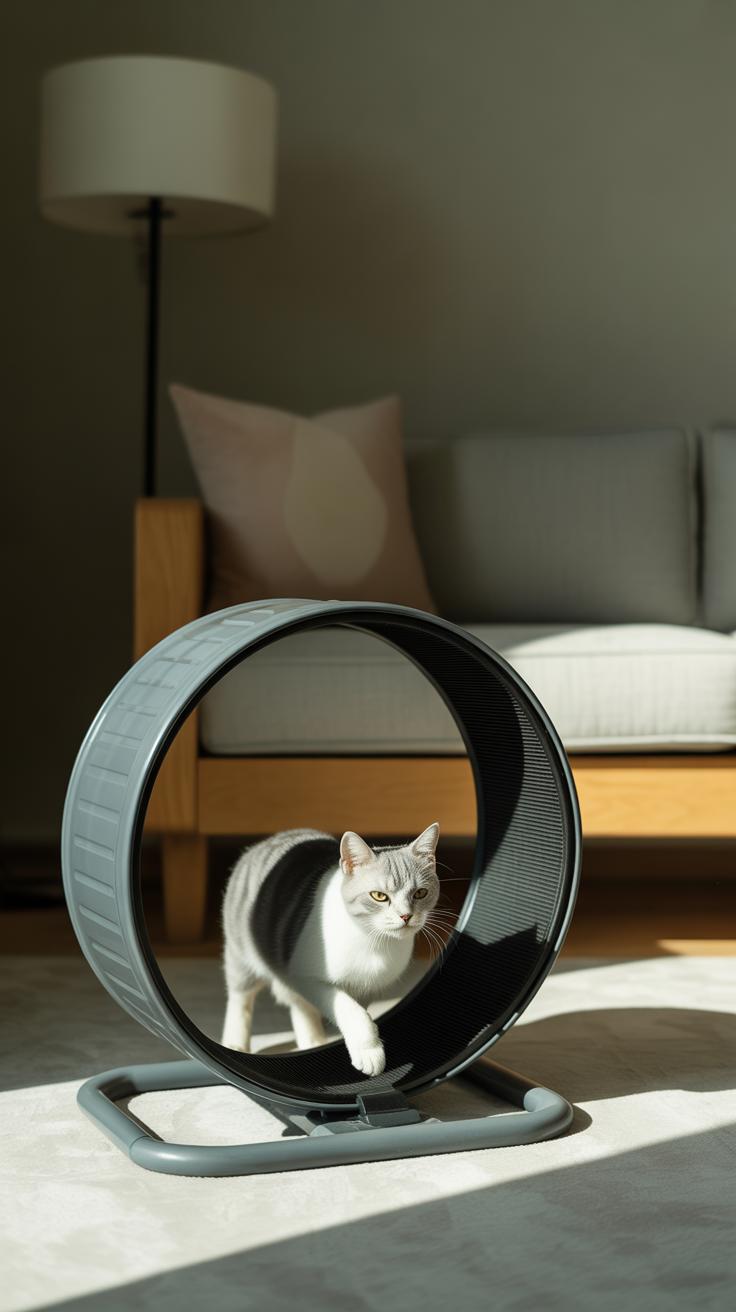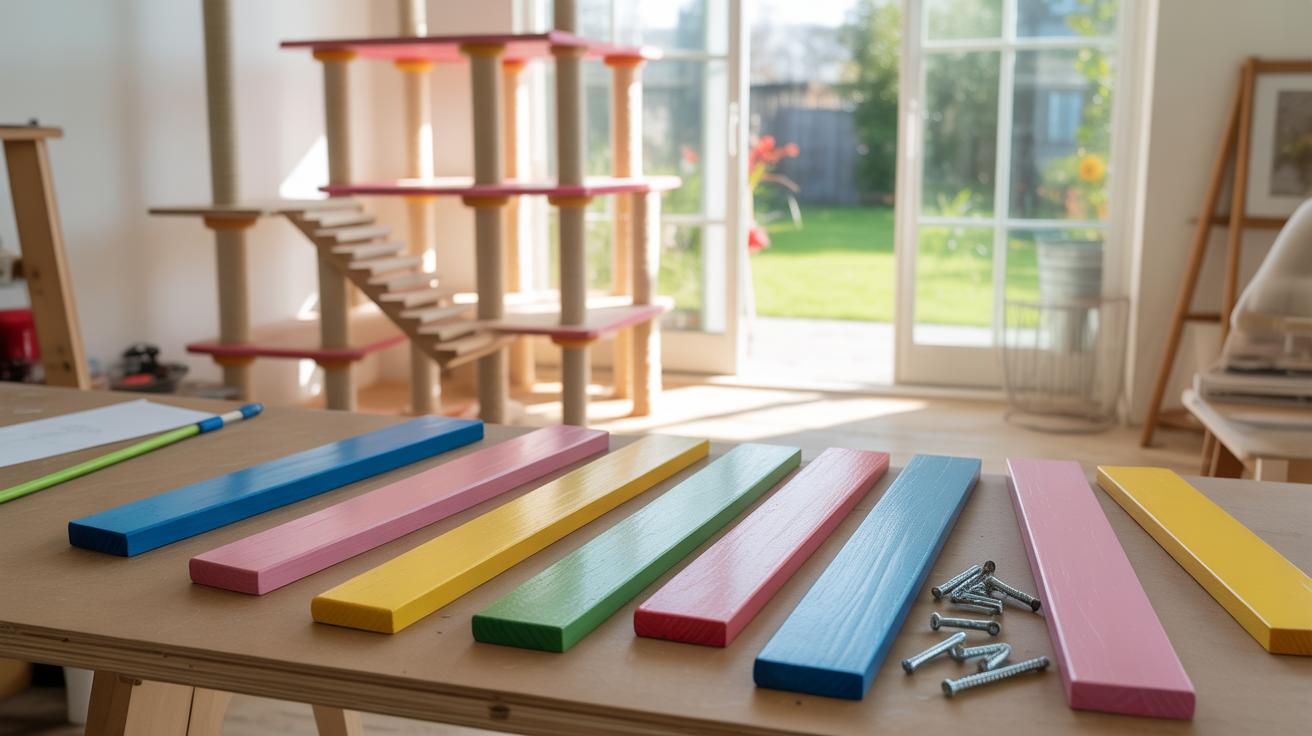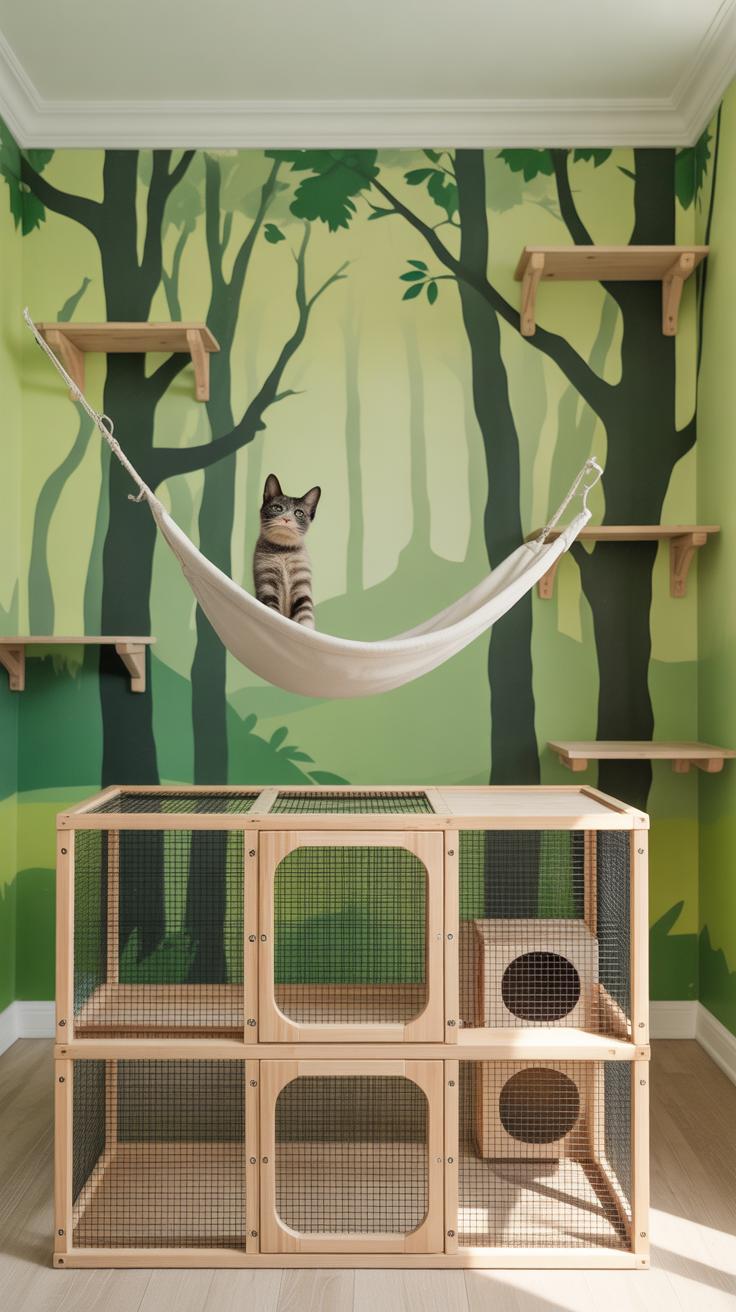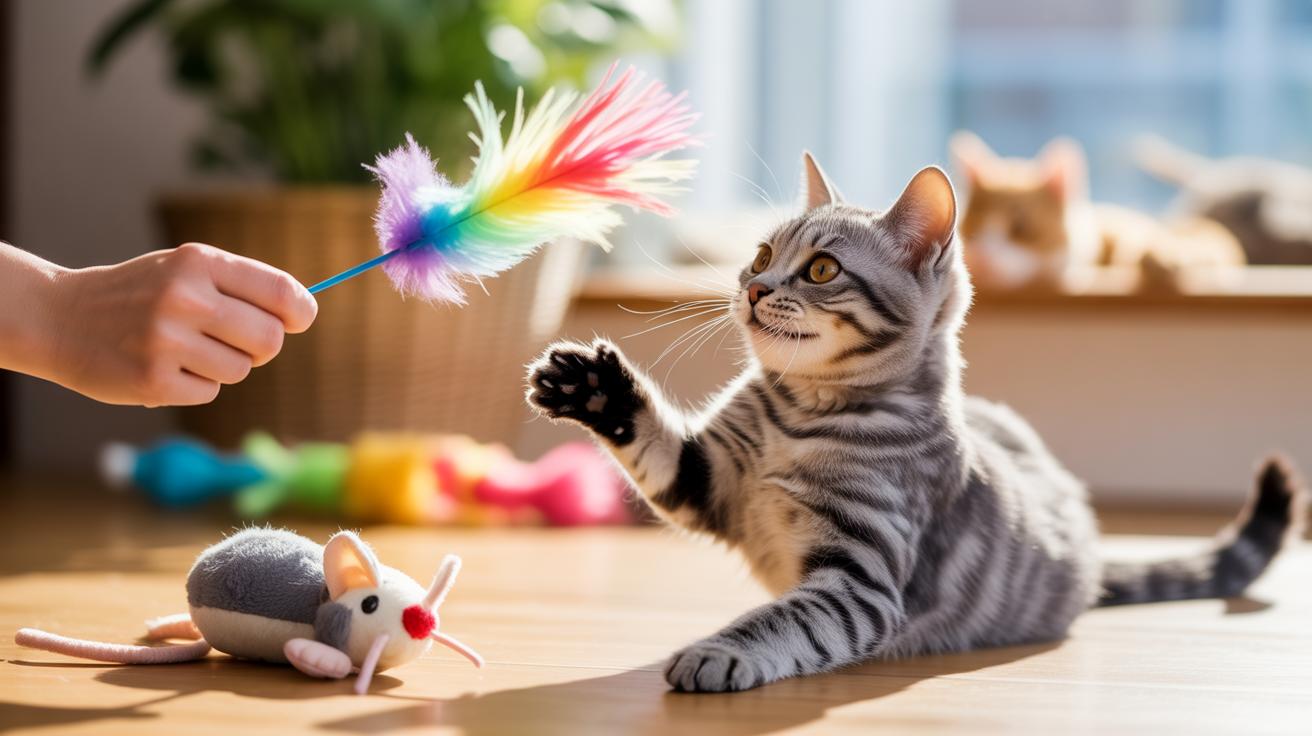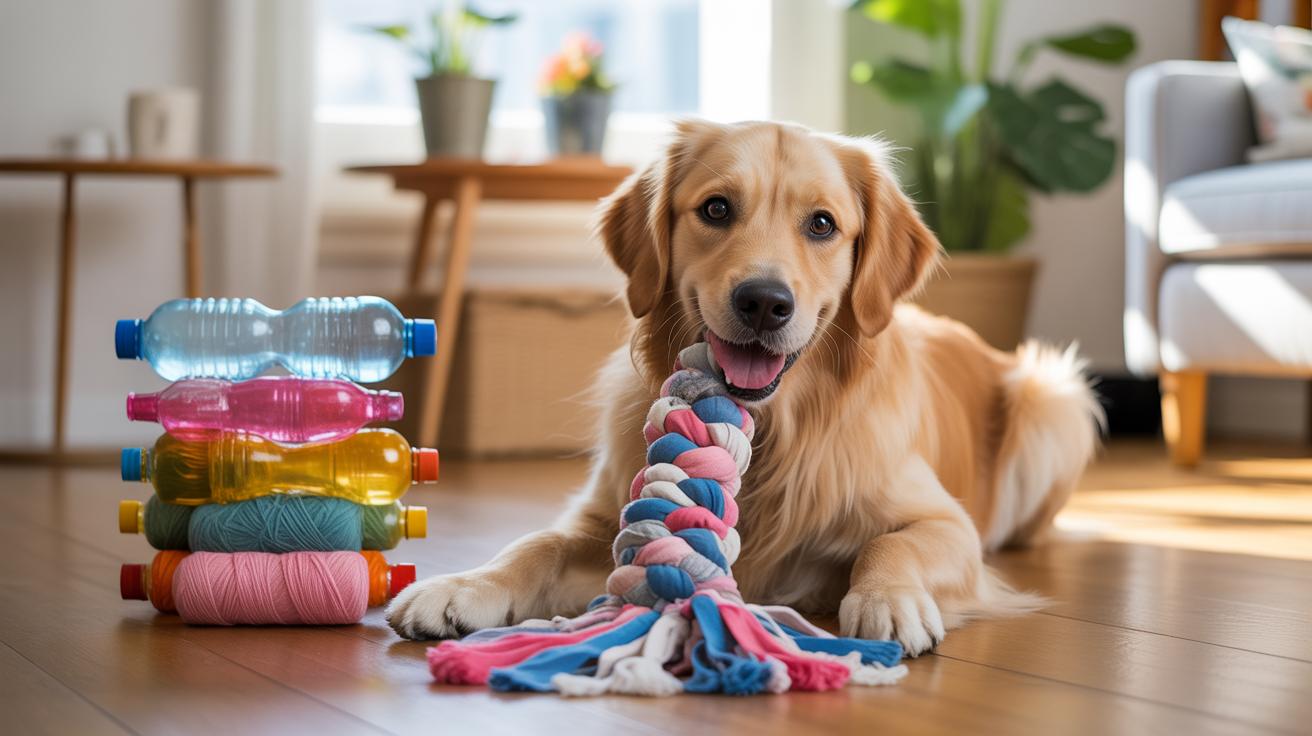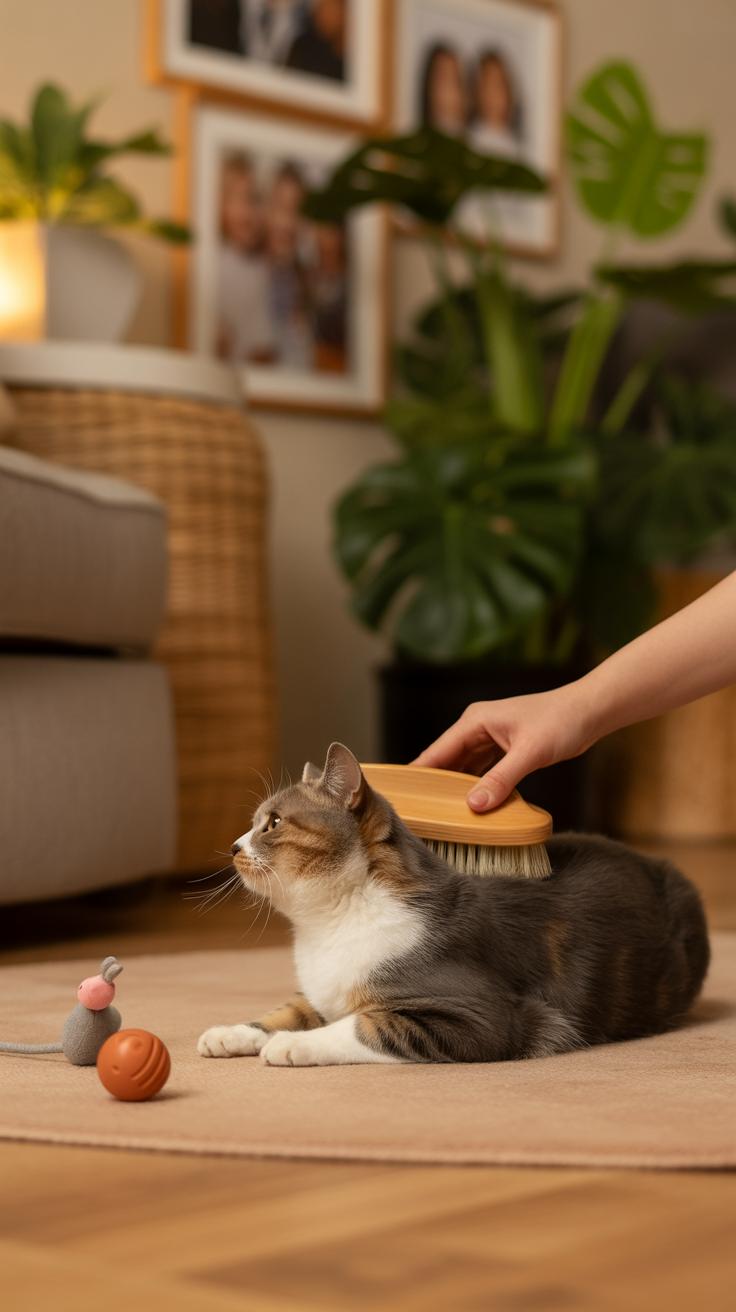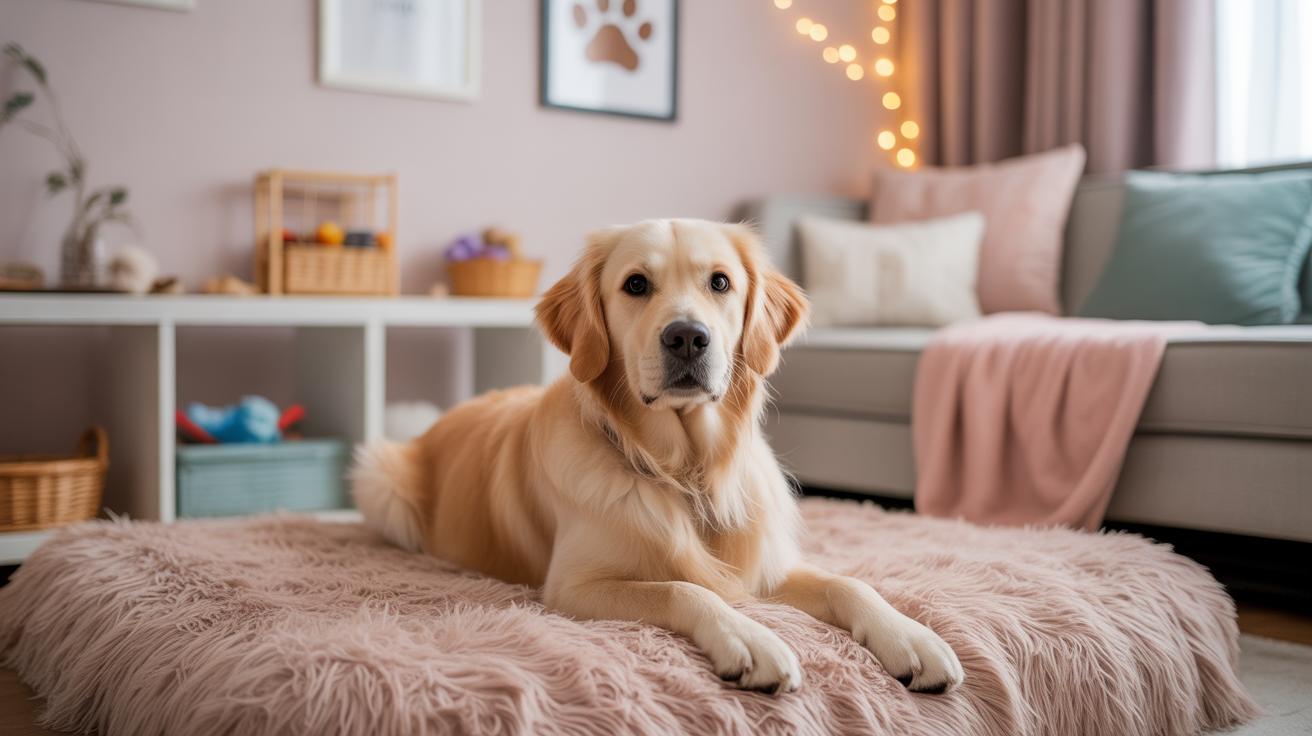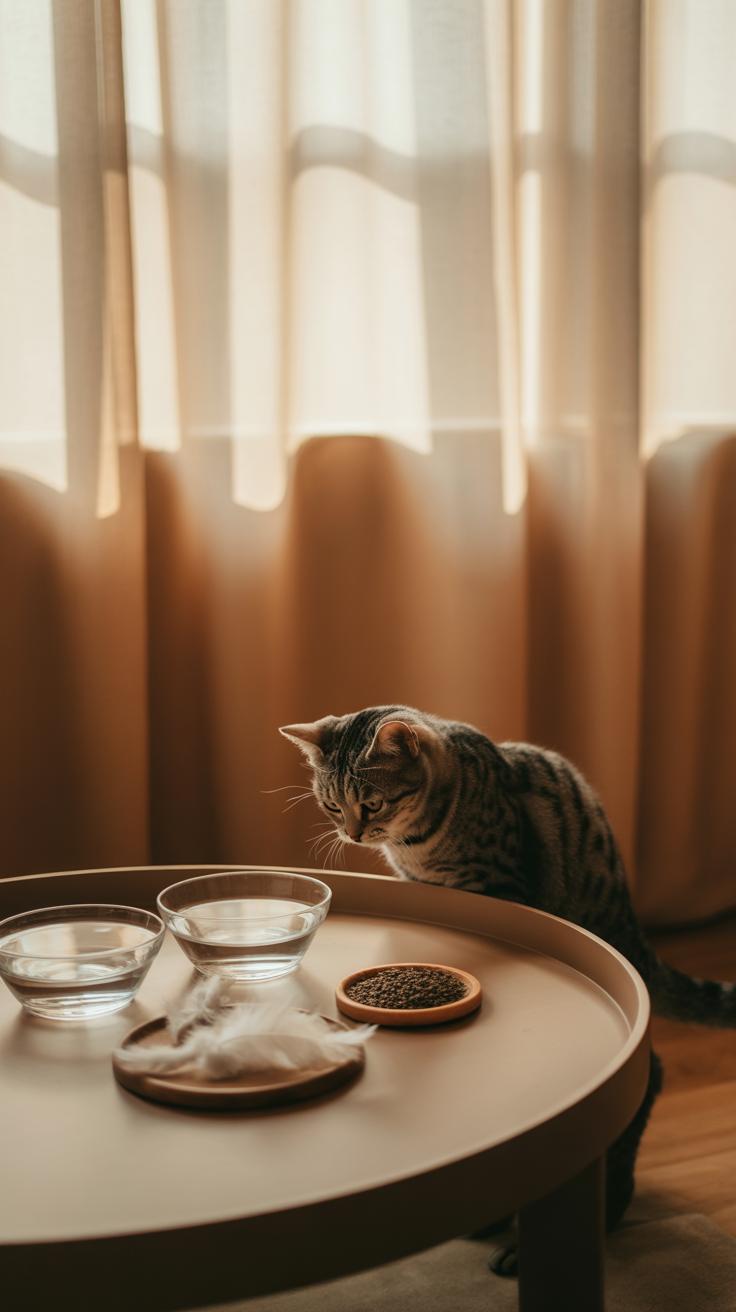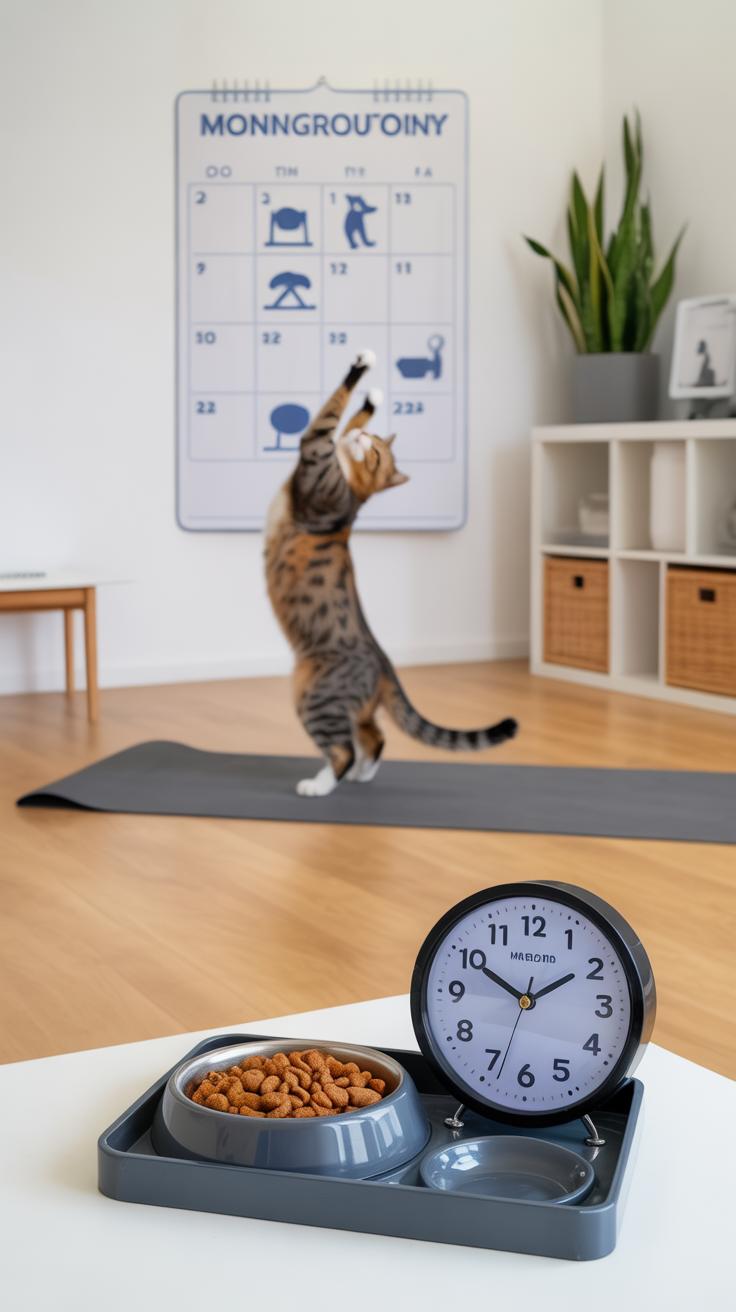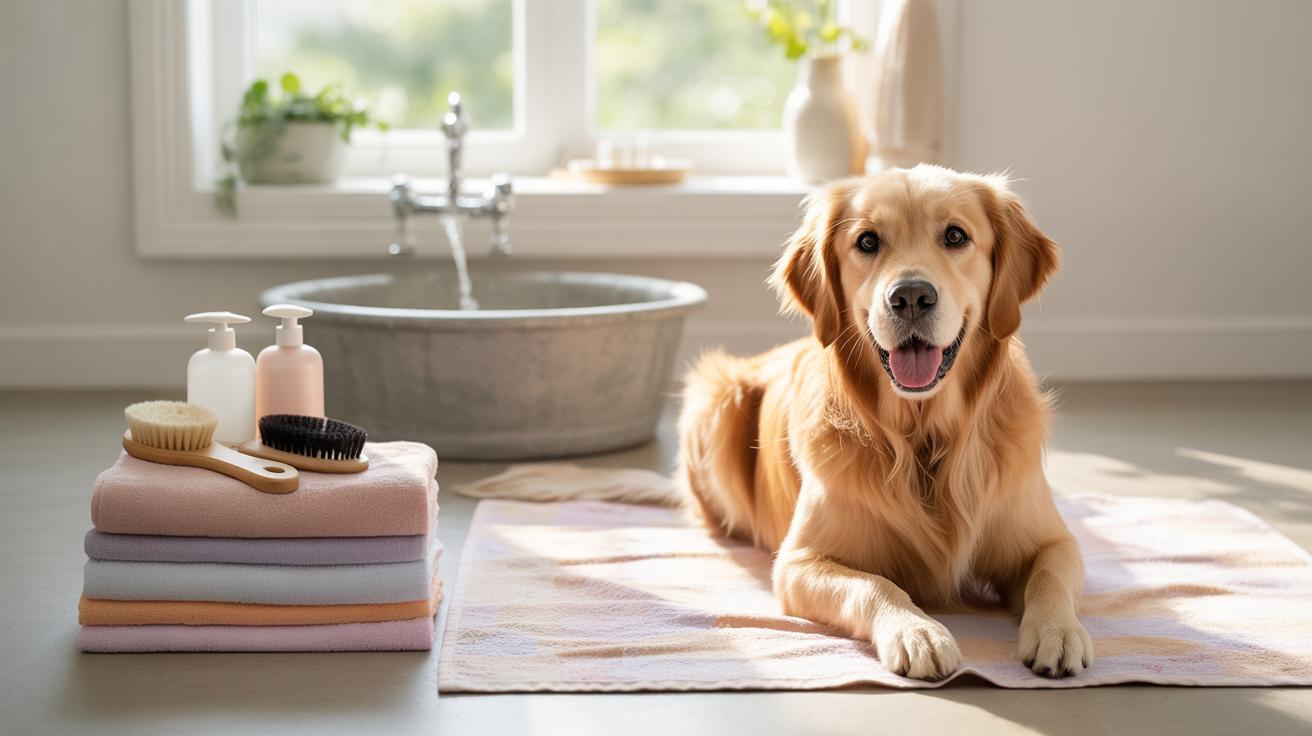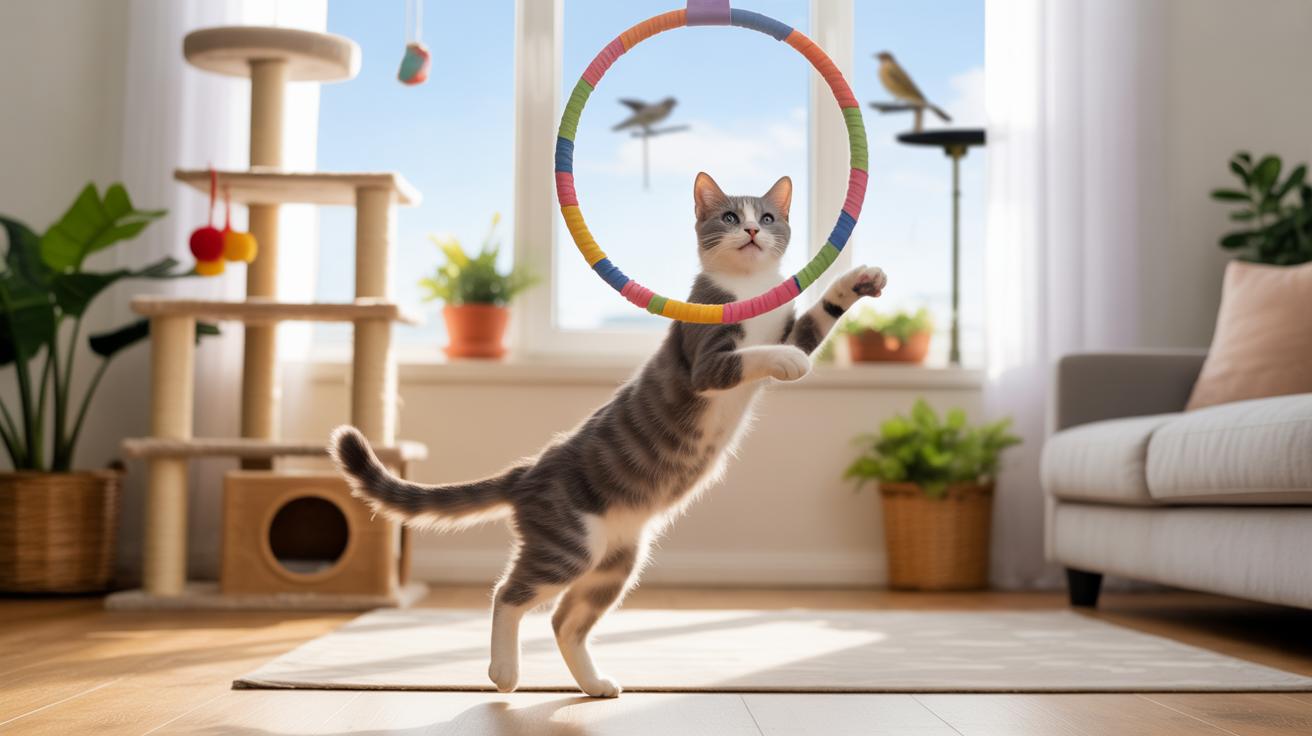
Indoor Cat Enrichment Ideas To Keep Cats Active
Introduction
Indoor cats often miss out on the chance to explore, climb, and play as much as outdoor cats. Without these activities, they can become bored or inactive, which can affect their health and happiness. It’s important to find ways to keep your indoor cat active and engaged.
This article explores several indoor cat enrichment ideas. These ideas help your cat stay active, feel happy, and prevent unwanted behaviors that arise from boredom. You will learn practical ways to enrich your cat’s life right in your home.
Using Toys to Stimulate Your Cats Mind and Body
When it comes to keeping your indoor cat active, toys are a key part of the mix. They don’t just keep cats busy—they encourage natural instincts like hunting and exploring, which can be surprisingly crucial even if you don’t realize it at first. Different types of toys target different senses and energies, and mixing them up might keep your cat more interested than sticking to just one kind.
For example, wand toys mimic the quick, unpredictable movements of prey, drawing your cat into a chasing game. This kind of play taps into your cat’s predatory nature while also providing good physical exercise. It’s amazing how just a stick with a feather or string can turn a lazy afternoon into a mini work-out session.
On the other hand, puzzle feeders challenge your cat mentally. These toys hide food or treats inside compartments your cat has to figure out how to open. They slow down eating and keep your cat thinking, which can be especially useful if your cat tends to gobble food quickly or looks bored during mealtimes.
Then there are interactive electronic toys, which can catch your cat’s eye with sudden movements or light. But, while these can be fun for a while, some cats lose interest quickly unless you rotate them or use them during play sessions with you.
Simple balls or small, soft toys that your cat can bat around alone offer another outlet for bursts of energy when you’re not available to play. Keeping a variety of toys on hand might make it easier to keep your cat’s attention over time, preventing that “been there, done that” attitude.
So, think about your cat’s personality. Does your cat prefer something to chase or something to solve? Trying out a few types can help you discover what truly engages them. Have you noticed how a certain toy suddenly sparks your cat’s energy? Those moments might be clues to what keeps them happiest and healthiest.
Interactive Toys for Mental Stimulation
Interactive toys, like puzzle feeders, can really engage your cat’s brain in ways that simple play might not. These toys require your cat to figure out how to get a treat or kibble, which can slow down eating and spark problem-solving instincts. I’ve noticed that some cats get surprisingly focused on them, almost like they’re working through a puzzle. It’s not just about keeping your cat busy—these toys can reduce boredom and keep anxiety at bay.
Laser pointers are another tool, though they’re a bit tricky. They get your cat’s attention immediately and force them to chase something that’s elusive. The mental challenge lies in tracking the quick, unpredictable movements. But there’s a catch—sometimes cats get frustrated when they can’t “catch” the dot, so it helps to end sessions by letting them catch a tangible toy. It’s a small balance, but it really stimulates their hunting instincts and sharpens focus.
Physical Play Toys
Physical toys encourage natural behaviors like running and jumping. Balls, for instance, are cheap and simple but effective. They roll unpredictably, and your cat will often dart after them, which promotes quick reflexes. Feather wands add a bit more complexity—they mimic prey flight through erratic fluttering. Watching my cat leap or swipe at a feather wand always reminds me how much they value this kind of active play.
These toys don’t just get your cat moving; they also allow an outlet for built-up energy. That can be crucial inside where space is limited. Yet, I’ve wondered sometimes if relying only on these might wear out their enthusiasm quicker than mixed types of play. So switching between toys that challenge their minds and toys that encourage physical bursts seems like a good approach to avoid boredom creeping back in.
Creating Climbing and Scratching Opportunities
Climbing and scratching are more than just habits for cats—they’re part of their nature, their way to stay sharp physically and emotionally. Cats need to stretch their muscles, sharpen their claws, and mark their territory. Without these outlets, they might start scratching your furniture or seem restless, which no one wants.
Cat Trees and Shelves
Cat trees and wall-mounted shelves tap right into those climbing instincts. When you give your cat vertical space, you open up new terrain for exploration indoors. Think about adding multiple levels, cozy hideouts, or even dangling toys to make it feel like a mini jungle gym. My own cat started using wall shelves not just for climbing but as lookout posts, seeming more confident and lively.
It doesn’t have to be a huge structure either—a few well-placed shelves can do the trick, especially if floor space is tight. Just make sure everything feels sturdy and secure. After all, safety comes first, right?
Scratching Posts and Pads
Scratching serves several purposes: it helps cats shed the outer layers of their claws, get a good stretch, and even relieve stress. Providing the right scratching options can steer them away from damaging your couch—or maybe, I should say, my couch—which they somehow always target.
Try offering a variety of textures: sisal-wrapped posts, cardboard pads, or even carpeted surfaces. Different cats seem to prefer different materials, so it might take a bit of trial and error. Place these scratching options in visible, often-used spots to encourage use.
Remember, scratching is both a physical release and a way to communicate. You might notice your cat using their scent glands while scratching, which means it’s important for their emotional well-being too. So, providing these options isn’t just about protecting your stuff—it’s about letting your cat express a key part of who they are.
Using a Cat Exercise Wheel
How a Cat Exercise Wheel Works
A cat exercise wheel looks like a large hamster wheel, but made for cats to run on. It usually stands upright and is wide enough for a cat to comfortably jog or sprint inside it. When your cat steps onto the wheel and starts moving forward, the wheel spins beneath their paws, allowing them to run without going anywhere. You might wonder if cats just ignore it at first. Some do, yes, but others take to it quickly—especially those with a lot of energy to burn.
The design encourages natural running movements, helping your cat get cardio exercise indoors. Unlike toys that come and go with interest, the wheel offers a consistent way for cats to get active on their own schedule. It’s a bit like a treadmill for humans but without the motorized part, so your cat controls the speed and duration.
Benefits of the Cat Exercise Wheel
This device offers several perks, especially if your indoor cat seems restless or tends toward weight gain. First, the wheel helps maintain a healthy weight by encouraging regular physical activity—that can ease frustration for cats that don’t have outdoor access. A healthier body condition reduces risks like diabetes and joint problems, which can sneak up on indoor cats.
Beyond just physical health, running on a wheel provides mental stimulation. Cats can get bored easily indoors, which sometimes brings out unwanted behaviors. The exercise wheel offers an outlet for excess energy and engages your cat’s mind—boosting their overall well-being.
What I find quite interesting is how some cats take pride in their wheel time, almost like it becomes a favorite part of their day. It’s not a replacement for play or interaction, but a solid piece of the enrichment puzzle—especially for those high-energy felines who need a bigger challenge indoors.
Setting Up an Indoor Cat Enclosure
Designing a Safe Indoor Cat Enclosure
A cat enclosure inside your home, sometimes called a catio, can bring layers of enrichment without opening doors to potential dangers. When you think about it, this space offers a way for your cat to explore safely—windows, fresh air, natural light—while staying contained. Setting one up isn’t necessarily complicated, but some features really matter.
First, choose sturdy materials. Wire mesh or metal grids work well—they keep your cat in but still let them see out. You don’t want any gaps or loose areas where your cat could squeeze through or get stuck. The enclosure should also have secure locks or latches.
Next, consider vertical space. Cats love climbing, so shelves, ramps, or platforms inside the enclosure help maintain interest and offer exercise. Add some soft bedding or a cozy nook so your cat also has a spot to relax.
Think about sensory stimulation too. Placing safe plants, toys, or scratching posts inside can keep your cat curious.
How Enclosures Benefit Indoor Cats
Indoor cats often suffer from boredom or stress, and an enclosure creates a controlled outlet for exploration. Your cat can watch birds, feel shifts in temperature, or sniff new scents without the risks of going outdoors. That kind of safe stimulation really seems to ease restlessness.
More than physical safety, the enclosure offers mental relief. It transforms a regular room into an engaging space and often reduces problem behaviors linked to frustration or anxiety. Plus, it gives you peace of mind; knowing your cat is enriched but secure feels good.
Have you ever noticed your cat pacing near a window, looking for something to do? An indoor enclosure could be what they’re missing—a curated environment to satisfy that curiosity. It’s not about replacing the outdoors entirely but giving your cat a bit of it, safely and thoughtfully.
Incorporating Routine HumanCat Interaction
The Role of Play in Bonding
You might notice that when you play with your cat regularly, there’s a shift — a quiet understanding, maybe, or just a sense of connection. Interactive play isn’t only good for their body; it also helps build trust and deepens the bond you share. Cats are often seen as independent, but they do crave attention in ways we sometimes overlook.
When you toss a toy or wiggle a feather wand, your cat’s focus sharpens, and they respond not just with bursts of energy, but with signals that they trust you. It helps keep them alert and motivated to engage with their space rather than retreat into boredom or stress.
Playing together gives your indoor cat something to look forward to daily. That regularity, honestly, can calm their nerves. Think about it — those little moments of shared excitement or curiosity become part of their routine, and maybe yours, too.
Simple Games to Try at Home
You don’t need fancy toys or complicated setups. Sometimes, the simplest things work best:
- Use a small ball of crumpled paper for your cat to bat around – surprisingly entertaining.
- Try dangling a string or shoelace just out of reach; cats love the chase, but always supervise to avoid swallowing hazards.
- A flashlight beam across the floor can spark a streak of quick sprints and paw swipes, though some cats might lose interest fast.
- Hide treats inside folded cardboard or paper tubes for little discovery games.
- Rotate toys every few days so your cat doesn’t get bored with the same objects.
It’s a bit of trial and error, really. Some cats will go wild chasing a simple bottle cap, others might ignore it. Pay attention to what your cat seems drawn to. And remember, even short sessions of play, just five minutes here and there, can do a lot.
Providing Sensory Enrichment Indoors
Offering sensory experiences to your indoor cat can really change how engaged they feel with their environment. Cats rely heavily on their senses, so you can tap into sounds, smells, and textures to keep them curious and active. It’s not just about toys—they experience the world in subtle ways, and even small changes can spark interest.
Introducing New Scents and Textures
Try introducing different fabrics or natural items around their usual spots. For example, a soft fleece blanket next to a cotton cushion can make your cat explore by touch. Some cats react strongly to catnip, but there are others like silvervine or valerian root that might surprise you with their interest. You could also add safe plants like cat grass or lavender near their resting places to provide fresh scents. These options encourage subtle sniffing and pawing, and maybe even gentle chewing, which can occupy their mind in a quiet way.
Sounds and Visual Stimuli
Sound can really catch a cat’s attention. Playing videos with birds, fish, or small animals moving about can entertain your cat for short bursts. Some cats love the fluttering of a laser pointer, while others might respond better to gentle birdcalls or the quiet rustle of leaves on a recorded track. Introducing a variety of stimuli at different times can keep your cat guessing—though you’ll notice some might find certain sounds a bit stressful or puzzling. It’s a bit of trial and error. Still, the motion and noises encourage them to pounce, stalk, or at least perk up and investigate, which is a good mental workout.
Creating a CatFriendly Daily Routine
Fitting play, rest, and feeding into your cat’s day isn’t always straightforward. Cats have their own rhythms, and it can be tricky to line up your schedule with theirs.
Try breaking the day into smaller chunks. For example:
- Short play sessions, two or three times a day, each lasting about 10 to 15 minutes.
- Quiet rest periods in between, letting your cat nap comfortably.
- Meal times that don’t just mean dropping food in a bowl, but opportunities to work for their meal or explore new textures.
These breaks help your cat stay interested and avoid boredom.
Scheduling Play and Exercise
Interactive play works best when it becomes part of a routine. Perhaps morning and evening sessions fit your day well? Cats often like to chase or hunt during dawn and dusk, so matching that can make play feel natural.
Simple toys, like wand teasers, can provide a chance to engage your cat’s hunting instincts. It’s not about exhausting them but sparking curiosity. If your cat loses interest quickly, switch toys or change the pace.
Keeping these moments consistent, even if short, helps your cat expect some activity. That little predictability can be comforting—and stimulating.
Meal Time Enrichment
Meal times offer a chance to mix things up. Puzzle feeders and food-dispensing toys slow down eating and make your cat work for their food. This directs mental energy toward problem-solving instead of boredom.
Sometimes, try hiding small portions around the home to encourage foraging. It’s not always necessary to use fancy gadgets; even a crumpled paper ball with kibble inside prompts a bit of play.
Varying the way your cat accesses meals can prevent routine dullness and keep their mind active. It might also help with portion control or reduce anxiety around eating.
Conclusions
Keeping your indoor cat active requires effort and creativity. By using toys, climbing structures, and interactive play, you provide both physical exercise and mental stimulation. This helps your cat lead a healthy and joyful life.
Try out the enrichment ideas discussed here. Observe how your cat responds and adjust to their likes. You will notice a happier cat that enjoys their indoor space more fully and stays healthy for years to come.

